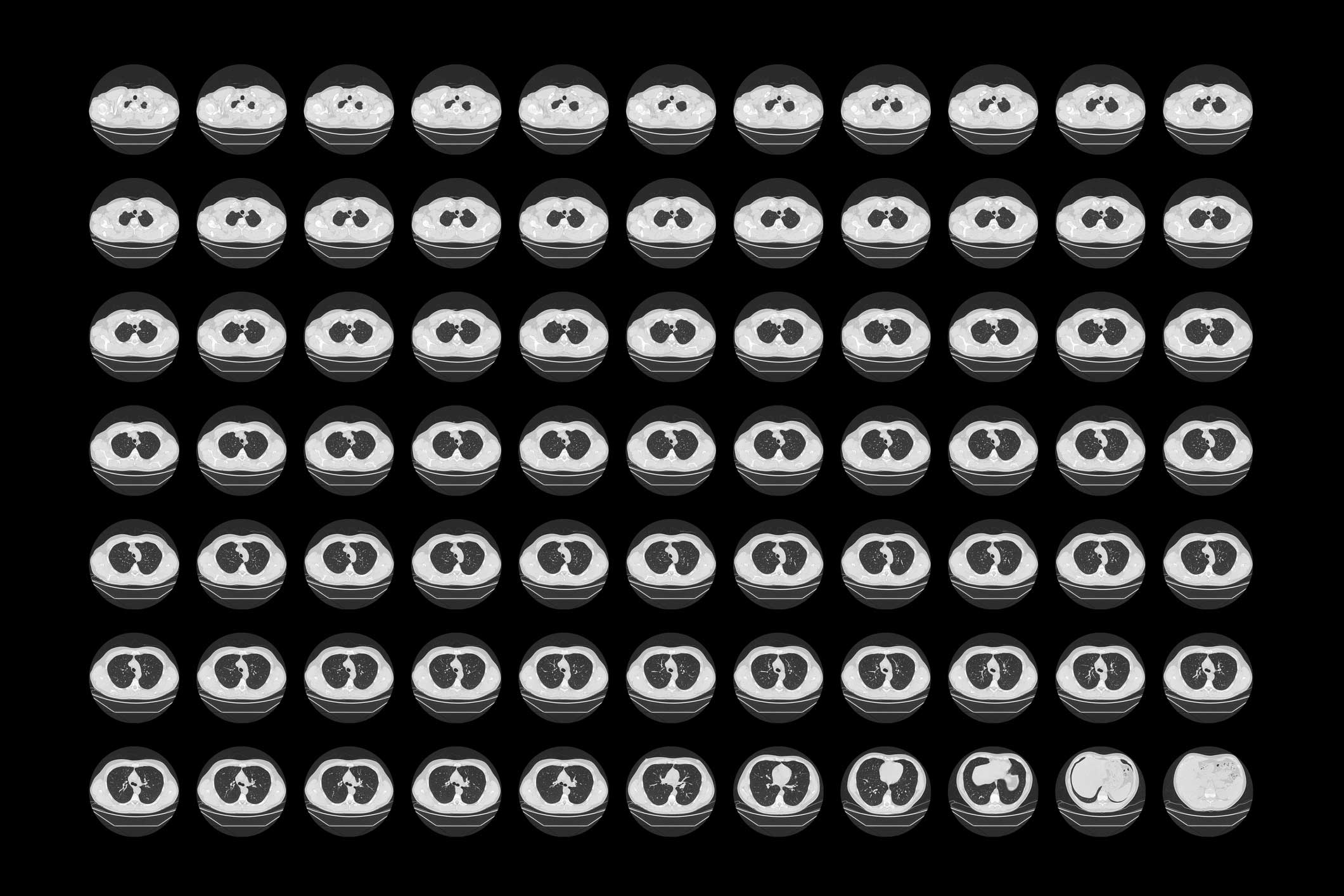As the No. 1 cancer killer of men and women, lung cancer has long been considered a death sentence. Seventy percent of lung cancer cases are diagnosed in stage 3 or 4, with only a 10 percent survival rate. Traditionally, lung tumors were found with a chest X-ray only after the patient was showing symptoms making effective, life-saving treatment difficult at best.
Now, thanks to low-dose CT (Computed Tomography) imaging and collaboration with primary care providers to target the most at-risk population — longtime smokers — lung cancer is becoming a more survivable cancer.
“Lung cancer survival rates are five times higher when the cancer is detected in its earliest stages,” says Dr. Andrew Salner, Medical Director of the Hartford HealthCare Cancer Institute at Hartford Hospital. “We have some good screening strategies for breast, colon and prostate cancer but had none for the largest cause of cancer mortality.”
Beginning in 2013, the Hartford HealthCare Cancer Institute and its imaging departments, closely mirroring a trial by the National Institute of Health, began offering low-dose CT scans to high-risk, asymptomatic patients in a clinical trial to determine the feasibility of a primary care based model in the communities it serves. Unlike a chest X-ray, a CT scan gives a detailed, real-time image of the lungs, allowing doctors to detect tumors in their early stages. The noninvasive scan is done in the traditional CT “doughnut” with minimal radiation exposure. It takes less than 15 minutes.
During the two-year trial, primary care providers referred patients to local cancer centers based on their smoking history. Hartford Hospital, the Hospital of Central Connecticut, MidState Medical Center and Windham Hospital paid for the screenings and thoracic radiologists from the four hospitals standardized their reporting and donated the image readings making the scan free for participants. Backus Hospital, which had recently joined the Hartford HealthCare system when the study was launched, was in the midst of a similar study.
“The question for us was, ‘What can our health system do to add something to these efforts?’” says Salner, who presented Hartford HealthCare’s findings during the 6th Annual Lung Cancer Screening and Continuum of Care Conference in Miami in December.
The Hartford HealthCare study, representing an accurate sample of race, ethnicity and socioeconomic backgrounds of patients in each hospital’s service area, was broken into two groups: Current or former smokers (within 15 years) between the ages of 54 and 74 who averaged at least one pack of cigarettes per day for 30 years; and current or former smokers (within 15 years) between the age of 50 and 74 who averaged at least one pack of cigarettes per day for 20 years and had one other risk factor like a family history of lung cancer, chronic lung disease, or exposure to asbestos or other carcinogens associated with lung cancer.
Of the 978 participants, 16 were found to have primary lung cancer; 12 of those were in stage 1 of the disease. The results of the Hartford HealthCare study were similar to the national trials, which showed 70 percent of lung cancers were caught in the earlier stages using low dose screening.
“Those patients have a 70 to 80 percent chance of a cure through either surgical resection or focused radiation,” says Salner.
Despite the success in detecting lung cancer in its early stages, there are still barriers for expanding the low-dose screening program to those at risk. After the success of the national trials, Medicare agreed to cover low-dose CT scans for those who have smoked at least a pack a day for 30 years, but still doesn’t cover screening for smokers with a 20-year habit.
““In our study, three participants who had malignant lung tumors were in that second group,” says Salner. “I think we now have strong evidence from our study and many others that the screening should be covered for people in that group as well. We are currently collaborating on a study with Lahey Clinic (Burlington, Mass.) to focus on this issue.”
Another barrier to expanding screening efforts is that smokers are a difficult population to reach, says Hartford HealthCare Cancer Institute Central Region Program Coordinator Denise Jones Gagne, who helps coordinate community outreach for cancer screenings for the health system. The low-dose CT screening program is complemented by smoking cessation programs at all five hospitals.
“I think we have a bigger hurdle because there’s a stigma attached to smoking,” says Jones-Gagne says. “Smokers don’t want to be judged.”
Salner agrees public awareness is crucial to ensuring at-risk populations get screened, but says traditional marketing strategies used for other cancer screenings likely won’t be successful.
“Rather than go to the public and say you need to have your lungs screened,” he says, “we needed to actively involve the primary care physician to both refer the patient and help translate the results into a plan. It’s a little different than a mammogram, for example, where we send a letter to the patient saying the test is normal or abnormal.
“There’s a whole gradation of different abnormalities that can be present, including some related to other structures in the chest. There’s a lot more nuance to it. We also provide navigation for those with highly suspicious findings to ensure that those patients are evaluated by the HHC thoracic oncology multidisciplinary team.”
Jones-Gagne says if a patient’s results come back clear, it’s a perfect time to talk about quitting smoking.
“It’s a launching pad really,” she says. “We can say, ‘You’re still healthy. Now is the perfect time for a fresh start.’”
Hartford HealthCare is participating in a study with scientists from Georgetown’s Lombardi Cancer Center to determine if these patients have greater success in quitting the habit.
Low-dose CT for lung cancer is available at all Hartford HealthCare hospitals. Talk to your primary care provider to see if you qualify.

